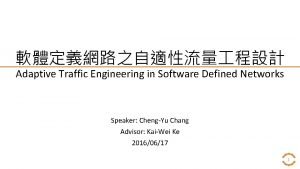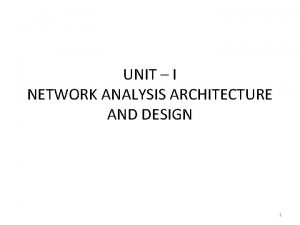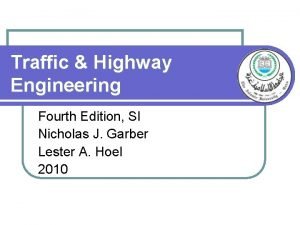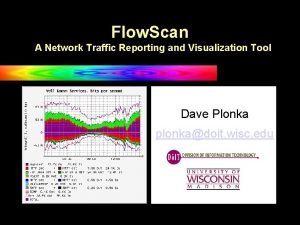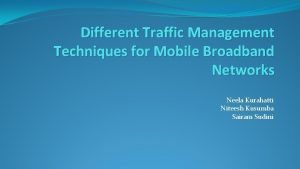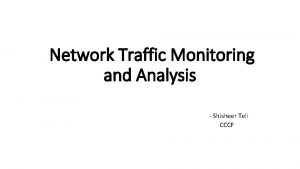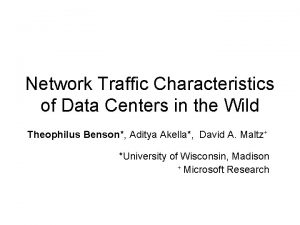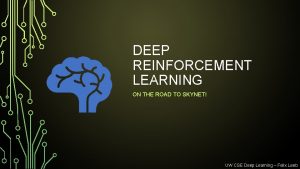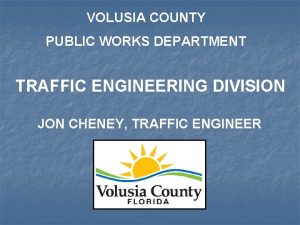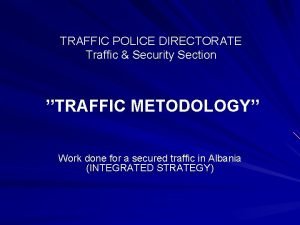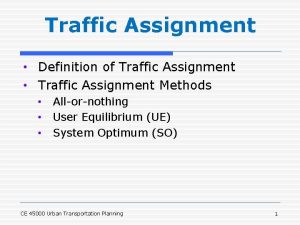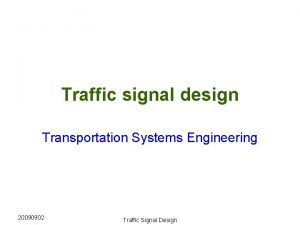Network Architecture and Design Chapter6 TRAFFIC ENGINEERING AND












- Slides: 12

Network Architecture and Design Chapter-6

TRAFFIC ENGINEERING AND CAPACITY PLANNING. Slides Prepared By: Kaif Jamal Gilani (Course Coordinator) Kaif Jamal Gilani (Course Teacher) Department of CNET Faculty of CS&IS Jazan University

OUTLINE • • Background (Throughput calculations). Packets, frames and cells per second. Traffic Engineering Basics: • Traffic characteristics and source models. Traditional Traffic engineering. Queued data and packet switched traffic modeling. Network Design Tools

BACKGROUND (THROUGHPUT CALCULATIONS) Before going to the topic of traffic engineering, let us know about throughput. Throughput is the actual amount of user data that is transmitted over the access circuit [Internet] and received by the network node [user]. Every user access circuit is regulated by throughput. Throughput can also be measured end to end across the entire network. The common units of measurement for throughput are bits, bytes, packets, frames and cells per second.

PACKETS, FRAMES AND CELLS PER SECOND

TRAFFIC ENGINEERING BASICS: TRAFFIC CHARACTERISTICS AND SOURCE MODELS Source Model Traffic Parameter Characteristics � There are two basic philosophies for characterizing source traffic parameters : Deterministic and probabilistic. Deterministic parameters are based upon a specific traffic contract, with conformance verifiable on a unit by unit basis. � The probabilistic (also called stochastic) model is typically measurable only over a very long-term average. Since the method and interval for computing the average can differ, conformance testing defines the details of the measurement method. Specification of the statistical model is also required.

TRADITIONAL TRAFFIC ENGINEERING

QUEUED DATA AND PACKET SWITCHED TRAFFIC MODELING. While Erlangs work well predicting voice network and circuit-switched traffic rates, they do not work well with packet-switched networks. � In packet-switched networks, some level of queuing is employed so that packets are queued in buffers and transmitted when congestion ceases, rather than being immediately blocked. � Packet-switched networks provide a mix of protocol and traffic types, whereas voice and circuit-switched networks provide point-to-point, transparent homogeneous transport of information. Therefore, packet switching demands a different analysis of traffic handling

NETWORK DESIGN TOOLS

WHO USES NETWORK DESIGN TOOLS?

WHAT GENERAL-PURPOSE TOOLS DO?

Best of For Ex Luck ! !! amina tion & your fu ture
 Traffic engineering network
Traffic engineering network Incomina
Incomina All traffic solutions traffic cloud
All traffic solutions traffic cloud Network analysis architecture and design
Network analysis architecture and design Traffic and highway engineering 4th edition
Traffic and highway engineering 4th edition Ece 526
Ece 526 Network traffic reporting
Network traffic reporting Network traffic management techniques
Network traffic management techniques Network traffic monitoring techniques
Network traffic monitoring techniques Network traffic characteristics
Network traffic characteristics Flowmon traffic recorder
Flowmon traffic recorder Network traffic alpha sky net
Network traffic alpha sky net Volusia county traffic engineering
Volusia county traffic engineering
